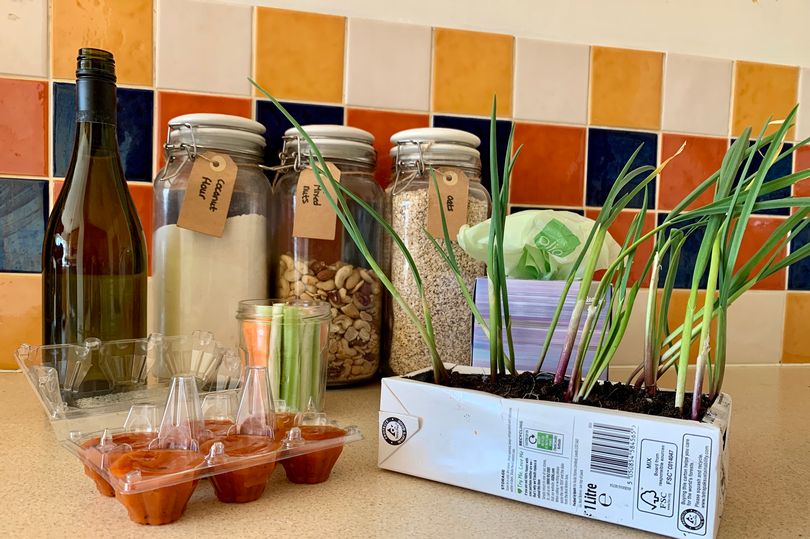The latest on all kinds of information, news, and resources that help you make working remotely better.
Five Ways to Improve Employee Morale with One-on-One Connection | Lydia Vargo, Forbes.com

Because of the pandemic and the switch to remote-first work, managers are finding it increasingly difficult to connect with their employees in meaningful ways. This may cause feelings of isolation, dissatisfaction and low morale, which in turn can lead to poor performance.
As a leader, you need to invest in your people, which includes treating them like the unique humans they are. With regular one-on-one interaction, you can improve employee morale, productivity and retention all in one. Follow these five tips to improve employee loyalty performance through the power of one-on-one connections.
1.Be Personable
If you want to connect with employees, you need to be approachable. Kick things off by sharing a little about yourself. Be conscious of not oversharing and causing discomfort, but giving some insight into your life and personality can bridge a gap and begin a healthy rapport. Perhaps it’s as simple as placing photos of your kids on the wall behind your desk or sharing what you did last weekend. It doesn’t take much, but a little goes a long way.
2. Connect with Multimedia
Email is okay, but your team is probably sick of answering emails — and their inboxes are full, anyway. Instead, connect with your team through richer media like:
• A Discord server for audio-only chats.
• Voice memos, so people can listen to your voice.
• Vidyard recordings that show your screen and your face.
3. Hone Your EQ
If you want to foster healthy one-on-one connections, you need to boost your EQ as a leader. It might sound like common sense, but how you approach one-on-one conversations can have a big effect on employee morale.
That means following best practices like:
Using positive phrasing: Remote employees can’t see your face or hear your voice, so they have to read into every little interaction. Frame things positively and over-communicate so employees know you’re trying to foster a warm, congenial relationship.
Avoiding micromanaging: Employees will dread talking to you if a one-on-one becomes a forum for critique. Micromanaging lowers morale and makes your team feel on edge and not trusted to do their jobs — not to mention less productive!
Keeping appointments: Life happens, but if you frequently reschedule chats with an employee, they’re going to think you don’t care. Try not to reschedule or cancel one-on-ones if at all possible.
4. Listen
Give employees your undivided attention when you speak to them. Let them do most of the talking and practice active listening. After all, communication goes well beyond the words that you speak — body language and tone are key to being understood and bridging gaps.
5. Schedule Fun Social Connections
If you allow employees to bond with you in a lower-stakes environment, they’re going to feel more connected and loyal in their careers. With professional boundaries top of mind, it is healthy for your team to blow off a little steam together. Never underestimate the power of non-work-related conversations and activities!
The Bottom Line
It’s hard to think about retention when you’re dealing with the here and now, but the connection still needs to be a priority if you want to retain your employees. Follow these five tips to foster closer relationships with your team and boost morale, productivity and retention all at the same time.
Top 10 Best Freelance Platform and Marketplace in 2022 | Nishi, Inventiva.co.in
The following are the best free marketplaces and websites for those looking to work as freelancers from home in 2022:
1.Upwork
Upwork used to be known as oDesk but has grown into one of the best places to find freelancers in any field. With over 12M freelancers and around 5M clients registered, it is the largest freelance platform in the world.
Here, you can find freelancers and projects related to just about any expertise. Despite its user-friendly nature, the website would require you to fill out an application that would be approved or rejected according to the current need for your skills.
2. Fiverr
With over 250 categories of professional services, it connects freelancers and businesses on a digital level. Clients can search for freelancers on this website and give them the project, and Freelancers can post what they are willing to offer.
3. Freelancer
Small businesses looking for website development, logo design, writing and marketing help can find talent and help on this website. Many people are interested in working with big-name companies like Intel, Microsoft, and Boeing on their client list.
You can sign up with freelancers quickly since their website is very user-friendly. Upload your previous work samples, bid on work, and communicate with the hiring managers. Besides not having to pay a penny to register, you won’t have to pass any interviews or tests
4. Guru
Companies can find freelancers from all over the world through this freelance marketplace. Thanks to their straightforward hiring process, clients can hire freelancers quickly and easily. Even though the website is new, its user base has already reached 1,500,000 million.
The number of completed jobs keeps growing by the day, and they have now completed more than a million jobs. Making a profile with them is pretty easy; all you need to do is create your profile, and you are ready to go. Various profiles post jobs every day, and there is a lot of competition.
5. People Per Hour
This is one of the biggest and most popular freelance marketplaces because you can find freelance services in audio, video, web development, web design, mobile development, social media, and much more. More than 1 million businesses have earned more than £130 million on this platform.
The primary goal of the company is to associate customers with suitable candidates. It is unique that they have personally selected every person you work with; consequently, they employ quality people and provide quality work.
6. Toptal
One of the best places to start looking for freelancers when you need top-quality freelancers. Thousands of applications arrive every day, but only a few are accepted due to their rigorous application process. A company can use it to hire from the top tier of top-tier freelancers.
7. FlexJobs
Since it offers on-site jobs, remote work, freelance opportunities, and flexible schedules, it is primarily a platform for flexible employment. They hire freelancers from more than 40,000 companies, and you can select one according to your skills and interests. To find quality job postings, you would have to sift through a lot of trash.
8. 99designs
An attractive logo can draw a lot of attention from consumers, so it is crucial to hire an experienced designer to create this logo for you. 99designs has a reputation for quality and design, so that you can trust their work.
9. SimplyHired
There are freelance jobs in almost all fields on this marketplace, perfect for people looking for part-time employment. This website has the advantage of not charging people for posting jobs, which explains why there are so many job openings there.
As a freelancer, you can upload your resume and get your profile up and running very quickly. Afterwards, you will also be able to view freelance jobs in your local area. As well as seeing a list of top salaries, the site provides a salary estimate tool.
10. Aquent
Job opportunities are mainly related to marketing, technology, and creative careers. Due to the quality of the work and the incredible talent of Aquent, they have won numerous awards. The company generally accepts candidates with more than two years of experience, though fresh graduates are also welcome to explore their positions.
22 Ways to Be a Little Bit Happier Every Day in 2022 | Integrisok.com
Here are some of our favorite tips to help boost happiness.
Help someone else. Turns out the human brain is wired for altruism. We’re taught from childhood that it is better to give than to receive, and there’s lots of evidence to suggest it’s true. We can now see, thanks to MRI technology, that the act of giving to others lights up the same parts of our brains as do food or sex.
Experiences are more important than possessions. New shoes may make us smile initially, but the happiness they bring fades quickly. The joy we feel when we focus on experiences is longer-lived in part because they foster in us a greater sense of vitality. We also often share experiences with others, which generates happiness.
Practice gratitude. Try this: each day for ten weeks, keep a gratitude journal. Write down three things you are grateful for each day. In an experiment at the University of California, Davis, three groups of volunteers kept journals. One group wrote about life events, another wrote about hassles in their lives and the third wrote about what they were grateful for. At the end, the gratitude group reported feeling more optimistic and satisfied with their lives.
Learn. Conquering new concepts or ideas helps build confidence and pride. US NEWS tells us that “education has been widely documented by researchers as the single variable tied most directly to improved health and longevity. And when people are intensely engaged in doing and learning new things, their well-being and happiness can blossom.”
Get more sleep. Seven to nine hours a night is the gold standard. Good sleep is crucial to having active, happy days. If you’re having trouble falling or staying asleep, it’s worth talking to your doctor.
Get older. One of the biggest perks of having a few decades in the rear-view mirror is that our happiness tends to increase as we age. Multiple studies indicate that as we age, we become happier and more satisfied with life. It may be a matter of having more perspective, but whatever it is, we’ll take it.
Smile. We know. Being told to smile can be annoying, so we are merely making a suggestion. BECAUSE… practicing ‘real’ smiles, AKA smiles that include your eyes, is a proven way to feel less distress in a distressing situation. In the word of psychology, this is called the facial feedback hypothesis, which suggests that our emotional experience is partly influenced by our facial movements. It’s a mind-body connection.
Dark chocolate. The darker the better. It’s science! Chocolate is a mood booster because eating it causes the release of endorphins in the brain. It also contains chemicals known to lift our mood such as phenylethylamine (a natural antidepressant) and tryptophan, which is linked to the production of serotonin, a neurotransmitter that produces feeling of happiness.
Wake up earlier. First, make sure you’re sleeping seven to nine hours a night. Next, build a pleasant morning buffer into your day. You should enjoy your mornings, which is hard to do if you’re running around trying to get out the door. An extra half an hour (or even 15 minutes) will give you some space and you’ll notice a shift in attitude right away.
Manage your stress. Get better at time management if you’ve got too much on your plate. Something as simple as a to-do list can give you a sense of control and order, and let’s face it, it feels so good to cross things off the list.
Tidy up. When we think of self-care, cleaning house doesn’t often make the list but it should. In 2016, a study out of the University of New Mexico found that clutter directly interfered with folks’ ability to feel pleasure in a room. On the flip side, a clean, organized space can increase productivity, boost confidence and imbue its occupants with a sense of control, accomplishment and clarity.
Start a meditation practice. It’s easier than you think. Mindful.org suggests getting started this way:
- Find place to sit that feels calm and quiet to you.
- Choose a short time, such as five or 10 minutes.
- Make sure you are stable and in a position you can stay in for a while.
- Follow the sensation of your breath as it goes in and as it goes out.
- Notice when your mind has wandered and simply return your attention to the breath.
- Don’t judge yourself or obsess over the content of the thoughts you find yourself lost in. Just come back.
- When you’re ready, gently lift your gaze (if your eyes are closed, open them). Take a moment and notice any sounds in the environment. Notice how your body feels right now. Notice your thoughts and emotions.
- That’s it! That’s the practice.
Put down your phone. Unless you’re keeping an online gratitude journal, that is. If you find yourself scrolling through social media, stop. A 2017 article in Forbes (and many subsequent studies) indicate that the more we use social media, the less happy we are. In fact, social media is known to increase anxiety, loneliness and depression.
Take a walk. A walk is good for your mood, your mind and your body. Tie your laces and go!
Avoid gossip. Fact: gossip may feel good in the moment, but really it causes stress. It’s not helpful and it immerses both the teller and the listener in negativity.
Don’t drink too much. When it’s been a rough day, an alcoholic beverage of choice can sound like just the ticket. Alcohol blunts our feelings, so if we feel bad it will make us feel less bad – BUT – it can also crank up feelings of anger and depression or make you feel aggressive.
Look at the stars. Researchers have found that there is a link between experiencing a sense of awe with feeling greater satisfaction and less stress.
Don’t believe everything you think. In other words, challenge negative thoughts. Here’s a technique: write down your negative thought. Maybe it’s something like “I am having problems at school/work. I don’t think I’m very smart.” Next, challenge that thought. Is there any evidence behind it? Am I misinterpreting the situation? What would someone else think if I told them my thoughts?
Read a story of adventure. Turns out you can reap the benefits of an awe-inspiring experience, like stargazing, by reading about one. Pick up a copy of “Moby Dick,” by Herman Melville; “The Call of the Wild,” by Jack London; or “Wild,” by Cheryl Strayed.
Hang out with happy people. Motivational coaches will tell you that you are an amalgam of the top five percent of the people you spend the most time with. Makes sense to hang with the happy crowd, then, doesn’t it?
Be your own best friend. Treat yourself like you would a dear friend. When you’re feeling sad or negative, ask yourself what advice you’d give a friend feeling the same way.
Breathe. Controlled breathing is an ancient practice and science is beginning to understand that its benefits are real. Do it any time you need or want to: take a deep breath. Pause. Exhale slowly as you count to five. Repeat four more times. This low-key practice can help reduce feelings of anxiety, depression and more.
9 emerging tech trends IT leaders need to watch | Stephanie Overby, Enterprisersproject.com
Following are some of the new technologies and capabilities with broad applications across companies and sectors for 2022 and beyond.
1.Hybrid workplace enablement tools
Nearly all technology leaders (97%) surveyed by IEEE agree that their team is working more closely than ever before with human resources leaders to implement workplace technologies and apps for office check-in, space usage data and analytics, COVID and health protocols, employee productivity, engagement, and mental health.
2. Cloud simplification technologies
Looking forward, IT leaders will be looking at cloud-native technologies and platforms to take full advantage of cloud’s core capabilities for greater innovation at speed and scale. Gartner predicts that cloud-native platforms will serve as the foundation for more than 95 percent of new digital initiatives by 2025 (up from 30 percent of workloads in 2021).
3. Cloud control planes
The combination of accelerated cloud adoption and the digitally distributed workforce and enterprise has created some big ol’ surfaces for cyber attacks. As a result, CIOs are rethinking how they protect their organizations in this new normal.
4. Smart space technology
This will be augmented with smart space technologies that help in building intelligent physical spaces, such as manufacturing plants, retail stores, and sports stadiums. IEEE found that 82 percent of surveyed IT leaders agree that implementing smart building technologies that benefit sustainability, decarbonization and energy savings has become a top priority.
5. Automating automation
Many organizations found themselves digitizing and automating critical customer-facing applications in the early days of the pandemic. What they need to do now is create roadmaps for automating more of the business processes for greater efficiency and resiliency in the long term.
6. Collaborative data platforms
Organizations applying insights from data belonging to their partners or suppliers have twice the market capitalization, according to an early 2021 study published by Capgemini. Secure, real-time cloud-based data exchanges, along with solution providers that enable collaboration based on data without the actual sharing of the granular data itself, are key enabling technologies here.
7. Blockchain applications
The enterprise use cases for open-source distributed database and ledger technology are becoming clearer. The four most important uses cases cited by IT leaders surveyed by IEEE will be secure machine-to-machine interaction in the Internet of Things, shipment tracing and contactless digital transactions, keeping health and medical records secure in the cloud, and securing connecting parties within a specified ecosystem.
8. Generative AI
The world is abuzz with the promise of generative AI from natural-language generation models that can write computer code to algorithms that produce deepfakes.
It’s not all hype. There are some meaty enterprise applications for generative AI, which is far more dynamic than the machine learning currently being used in most organizations.
9. Next-generation EDR
As ransomware continues to rile organizations, next-generation endpoint detection and response (EDR) is emerging as a key cybersecurity capability for the next normal, providing increased visibility into threats with machine learning detection for faster response.










